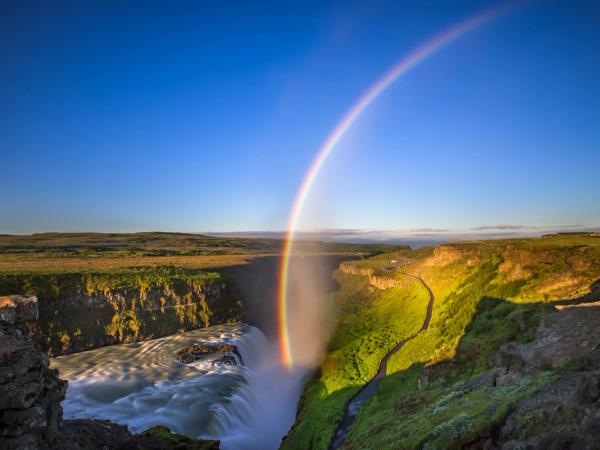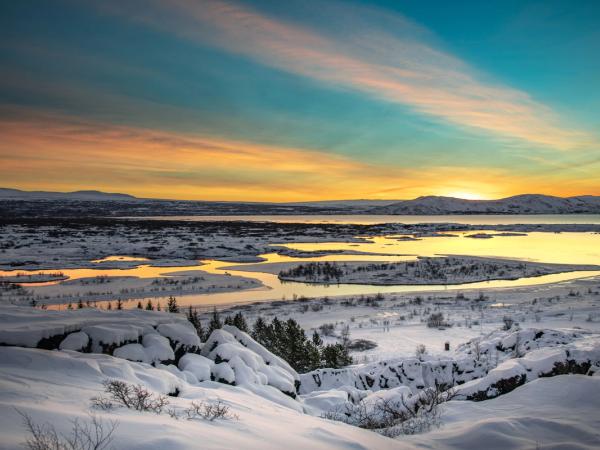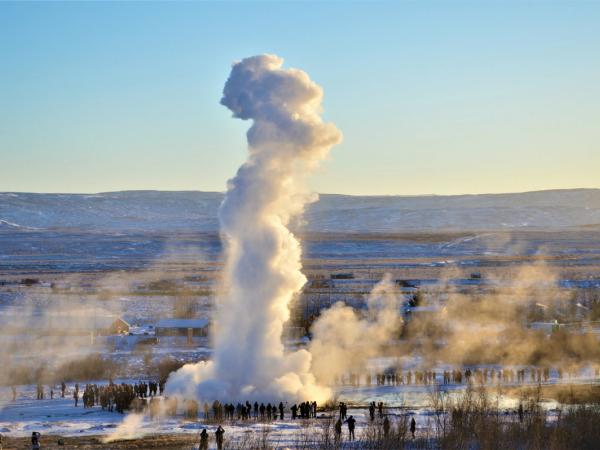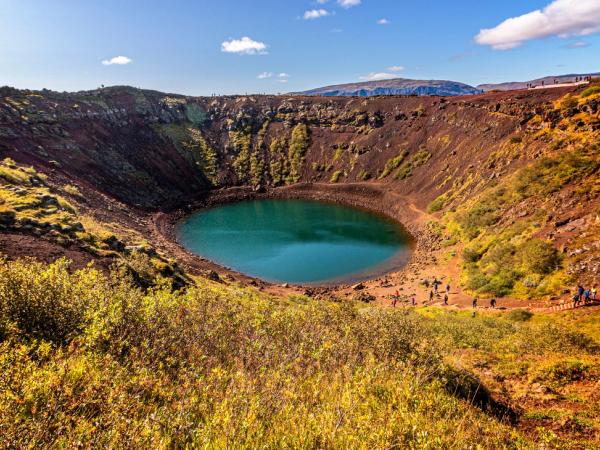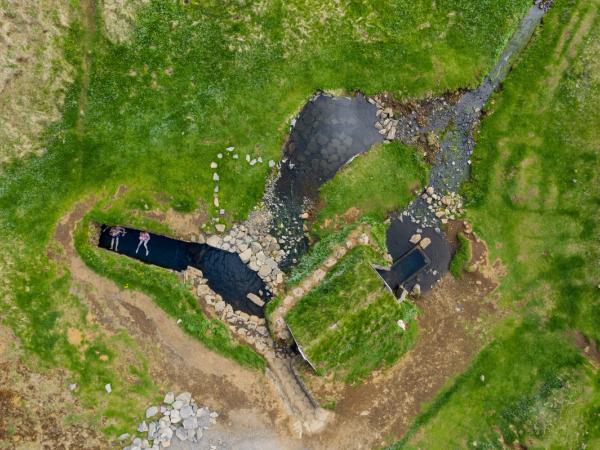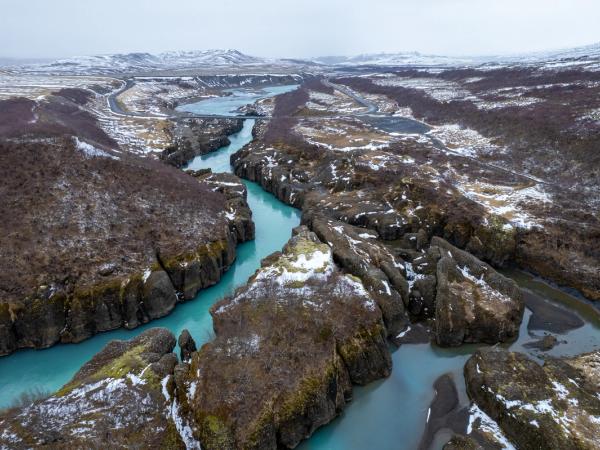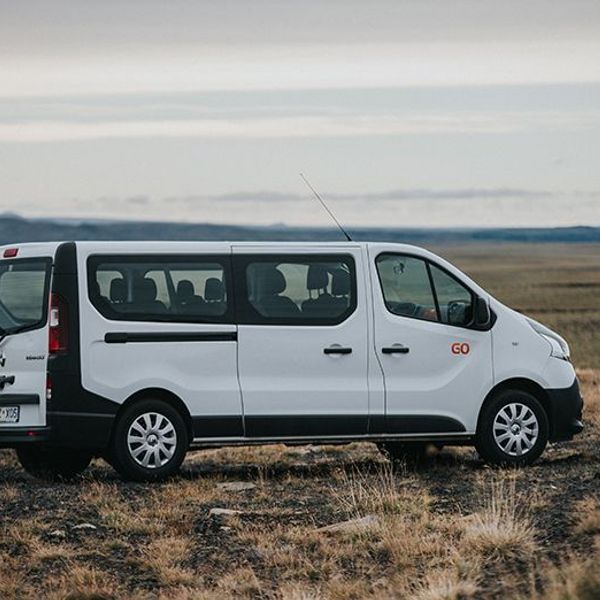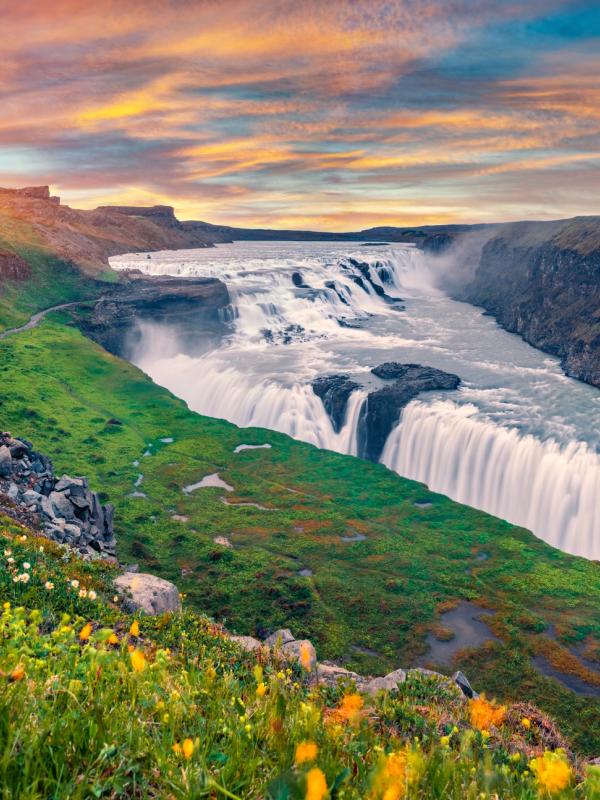
How to Drive the Golden Circle in Iceland: Route, Stops & Itinerary
Iceland’s Golden Circle is iconic for a reason – within just a short drive from Reykjavik, you’ll witness tectonic plates pulling apart, geysers erupting skyward, and mighty waterfalls thundering into dramatic canyons. Whether you’re starting your campervan adventure or planning a memorable day trip, it’s the perfect introduction to Iceland’s wild beauty.
Here's everything you need to know about driving the Golden Circle in your campervan.
Is the Golden Circle Worth it?
Yes, it’s easily Iceland’s most iconic route, offering an incredible range of natural wonders in a single, manageable day. For road-trippers, it’s a fantastic first taste of Iceland’s staggering natural scenery. If you’re doing it as part of a wider road trip around the Ring Road, it also makes perfect sense to do it at the beginning of your trip before heading towards the south coast.
What Stops Are Included on the Golden Circle Route?
The Golden Circle is a 230-km (143-mile) loop from Reykjavik that ties together three of Iceland’s most famous natural sights:
- Thingvellir National Park – This UNESCO World Heritage site holds both historical and geological significance. Visitors can walk between two continents as the North American and Eurasian tectonic plates slowly drift apart. This location also served as Iceland's first parliament site, making it the lifeblood of Icelandic history.
- Geysir Geothermal Area – Haukadalur Valley houses this geothermal wonderland. The famous Strokkur geyser erupts roughly every 5 minutes and shoots boiling water and steam skyward. Visitors will see Iceland's volcanic activity through bubbling mud pots, steaming vents, and mineral-rich landscapes
- Gullfoss Waterfall – This spectacular "Golden Falls" gives the entire route its name. The powerful two-tiered waterfall on the Hvítá River drops dramatically into a rugged canyon. If you visit in summer, you'll witness approximately 140 cubic meters of glacial water flowing over the falls every second – an awesome display of power.
These are the main stops – but if you’re driving the route yourself, you’ll find plenty more to see along the way. Farms, spas, secret waterfalls, and hidden hot springs are all within easy reach.
Other popular stops worth adding to your route include:
- Brúarfoss Waterfall – A striking blue waterfall reached by a scenic riverside trail.
- Laugarvatn Fontana – A lakeside geothermal spa with steam baths and warm pools.
- Efsti Dalur Farm – A family-run dairy farm with homemade ice cream and a café overlooking the cows.
- Friðheimar Tomato Farm – A unique greenhouse restaurant where everything revolves around tomatoes.
- The Secret Lagoon – One of Iceland’s oldest hot springs, set in a steamy geothermal field near Flúðir.
- Hrunalaug Hot Spring – A small, rustic hot pool tucked into the hills near a sheep farm.
- Kerið Crater – A vivid volcanic caldera filled with an aquamarine lake, easy to explore on foot.
- Brúarhlöð Canyon – A narrow, twisted canyon along the Hvítá River, often missed by the tour groups.
Of course, there are plenty more detours that you can make during your Golden Circle self-drive tour. We’ve detailed a few below in our Golden Circle self-drive itinerary.
How Long Does It Take to Drive the Golden Circle in Iceland?
It takes 6–8 hours with quick stops or 8–10 hours at a relaxed pace. With more time, you’ll be able to visit a hot spring and enjoy local treats along the way. If you're camping in the area afterward, you'll have even more flexibility.
There are a whole lot of campsites within the Golden Circle area, as well as a few down south on the Ring Road where you emerge after completing it. For more information on campgrounds in Iceland, we have created a detailed page about campsites, including a map.
Why is the Golden Circle Iceland’s Most Popular Day Trip?
There’s a reason why nearly every Iceland itinerary includes the Golden Circle – it captures some of the country’s best landscapes in a compact loop close to Reykjavik.
- Proximity to Reykjavik - Thingvellir National Park sits just 45 minutes from Iceland's capital. Short-stay visitors, including those stopping between Europe and North America, can easily explore this route.
- Geological diversity - The compact route lets you see where tectonic plates meet, watch active geysers, and feel the raw power of glacial waterfalls. You'll sample Iceland's most magnificent landscapes in one trip.
- Accessibility year-round - The Golden Circle stays available through all seasons, unlike Iceland's remote attractions. Road crews have managed to keep the roads safe even during winter months (though weather conditions need checking).
- Flexibility - The Golden Circle works for various travel styles. You can join a hosted tour or create your own adventure. Self-driving lets you customize your experience and spend more time at sites that fascinate you most
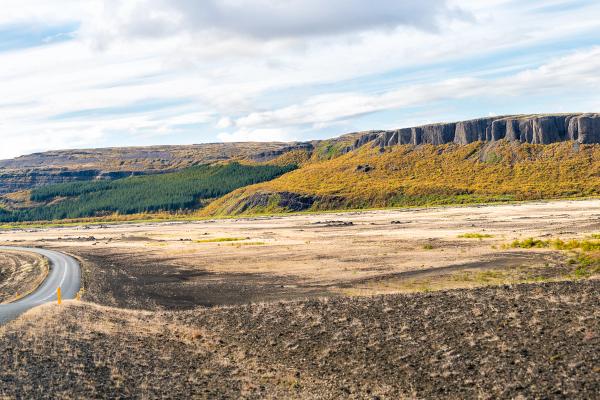
When is the Best Time to Drive the Golden Circle
You can drive the Golden Circle any time of year, and each season brings its own unique charm (and challenges
The Golden Circle in Summer
Summer in Iceland is a special time. There’s almost no end to the daylight, and the weather could almost be described as warm! However, this is the busiest time to travel in Iceland as well, meaning this is the busiest time on the Golden Circle.
But with a campervan in Iceland, you’ll be free to come and go to the sights as you please. And with the nearly 24 hours of sunlight in the Icelandic summer, staying out late to explore after the tour buses have left - a tempting idea if ever there was one.
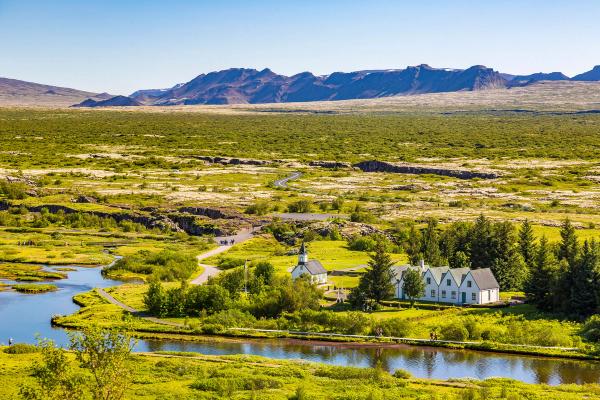
The Golden Circle in Winter
Come winter, the snowy, frozen landscapes of Iceland are like a completely different world. The Golden Circle area is still accessible thanks to some great roads and regular clearing of snow.
Keep in mind, though—winter driving conditions are a whole different ballgame. Thingvellir National Park might be blanketed in snow. The Geysir still erupts in winter, and parts of the waterfall Gullfoss will be frozen.
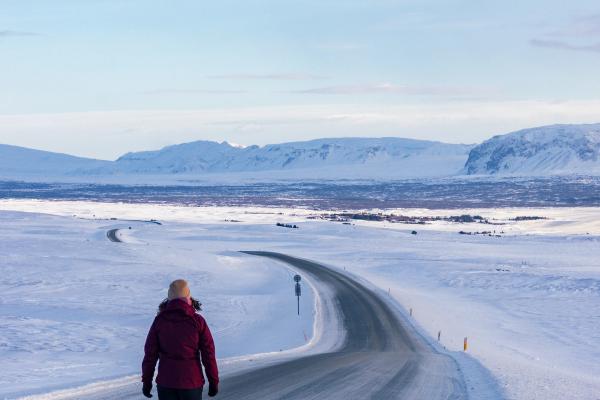
The Golden Circle in Spring and Autumn
In general, the shoulder seasons of Spring and Autumn are fantastic times to drive Iceland's Golden Circle in a campervan. The crowds aren't as busy as they are in summer, and there's a lower chance of storms, snow, and ice than in winter.
Depending on which shoulder season you choose, the days will either be getting longer (in Spring) or shorter (in Autumn). However, both seasons enjoy dark skies at night, which means there is always a chance to see the Northern Lights. This would make a fantastic addition to any campervan tour of the Golden Circle.
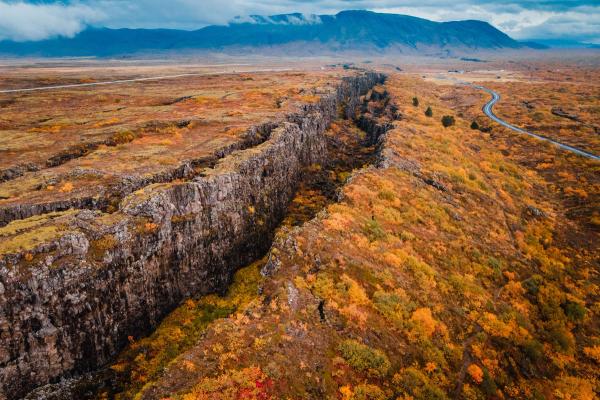
Clockwise vs. Counterclockwise: Which Way to Drive the Golden Circle?
Both clockwise and counterclockwise loops have their advantages. Your choice depends on your schedule and preferences:
Clockwise (Most Common Route)
This is the traditional direction and the one most tour buses take:
- Starts at Thingvellir National Park (via Road 36 from Reykjavik)
- Continues to Geysir and Strokkur (via Roads 365 and 37)
- Ends at Gullfoss waterfall, before looping back south to Reykjavik or the Ring Road
If you're heading out early, this direction makes the most sense – it puts you at Thingvellir while the morning light hits the rift valley, and you’ll arrive at the other stops in good time.
Counterclockwise (Less Crowded)
Want to avoid the big bus groups? Go counterclockwise:
- Start by heading to Kerið Crater, Friðheimar, or the Secret Lagoon
- Visit Gullfoss first, then work your way back toward Geysir and Thingvellir
This route often means you're hitting the major sites when fewer people are there – especially in the middle of the day. It also gives you more flexibility if you're coming from the South Coast.
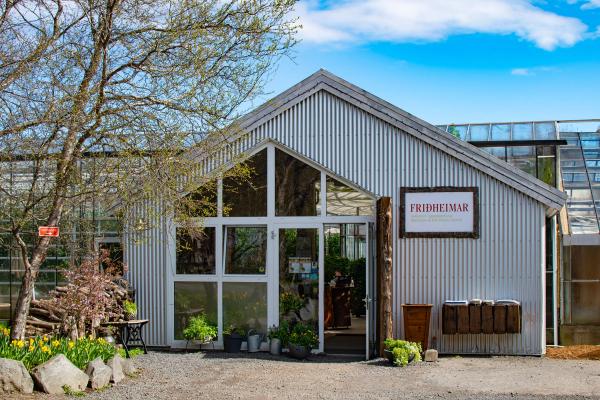
Iceland’s Golden Circle: A Detailed Itinerary
The Golden Circle is home to so many cool places that a bit of organization is essential to make sure you visit as many spots as you can (want) and don't miss any important attractions.
Thingvellir National Park
Just 45 minutes from Reykjavik, Thingvellir is usually the first big stop on the Golden Circle – and it’s a powerful one. This is where Iceland’s first parliament gathered over 1,000 years ago, and where you can literally walk between two tectonic plates.
Most visits start at the Hakid Viewpoint, right next to the visitor center. From here, you’ll get sweeping views over Lake Thingvellir, the continental rift, and the surrounding mountains. A walking path leads down into the rift valley, where you’ll pass some of the park’s highlights:
- Lögberg (Law Rock), the historic meeting place of Iceland’s first parliament
- Öxarárfoss, a scenic waterfall tumbling into the canyon
- Several dramatic fissures and easy trails that wind through the lava fields
You don’t need hiking boots for this one – it's more of a relaxed walk than a full hike and takes about an hour to loop around.
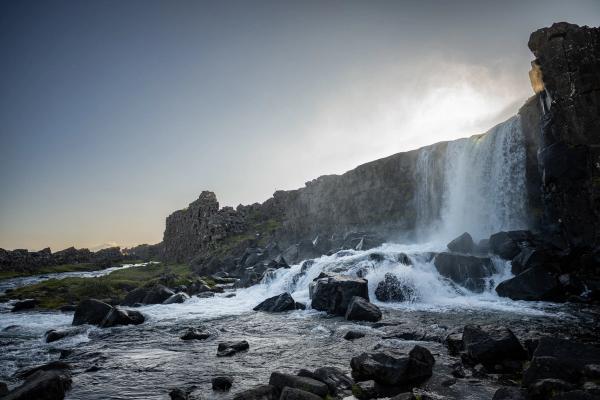
On the way to Thingvellir
Gljúfrasteinn Museum: A not-so-known sight on the way towards the National Park is Gljúfrasteinn. This is the museum of Halldór Laxness (1902-1998) who stands head and shoulders above other Icelandic writers of the 20th century.
Thórufoss Waterfall: A short detour north along Road 48 takes you to the waterfall Thórufoss. It’s a little-visited spot that’s worth a stop.
Diving the Silfra Fissure
If there’s one extra activity to splurge on while visiting Thingvellir, it might be this. Silfra is a narrow fissure filled with glacial meltwater, and it’s the only place in the world where you can swim between two tectonic plates. The water is so clear you’ll have visibility of up to 100 meters, and the feeling of floating through this deep, surreal canyon is something people remember for life.
You can snorkel or scuba dive here with a licensed guide – just make sure to book ahead, as tours fill up fast, especially in summer.
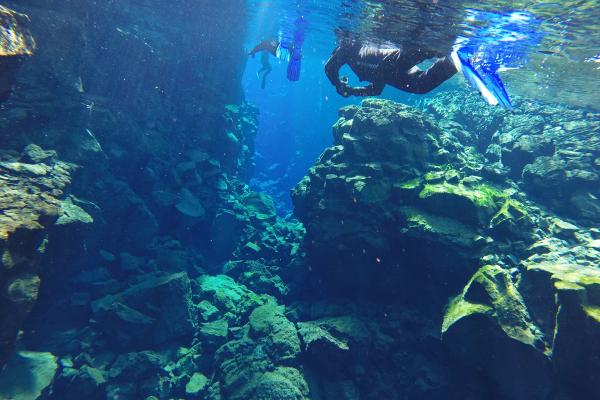
Geysir Geothermal Area
After Thingvellir, the next stop on the Golden Circle route is the Geysir geothermal area. The original geyser rarely erupts now, but Strokkur goes off every few minutes – blasting boiling water up to 20 meters into the air.
There's also plenty more boiling water here, with several pools of various colors giving off steam and bubbles. A short loop trail passes steaming vents, hot pools, and colorful mineral-stained earth. Climb the hill behind the geysers for a wide view of the whole area.
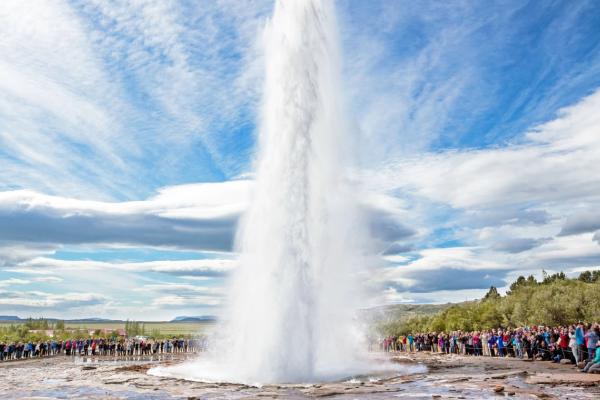
On the way to Geysir
Laugarvatn Fontana Spa
If you’re not pressed for time, in Laugarvatn you can soak in the geothermal waters at the Laugarvatn Fontana Spa. This is also the location that runs the popular geothermal bread baking tour, where you’ll go with a guide to see how bread is baked underground using the volcanic power that surrounds the lake.
Efsti Dalur Dairy Farm
This family-run dairy farm makes a great stop on the way to Geysir – especially if you’ve got kids or just love ice cream. The café overlooks the barn, so you can watch the cows while you tuck into homemade ice cream. It’s a relaxed, friendly place with a real local feel.
Brúarfoss Waterfall
Just past Efsti Dalur, a short detour takes you to one of the bluest waterfalls in Iceland. Brúarfoss is narrow but stunning – its vivid color comes from glacial meltwater rushing through a dark volcanic channel, creating an almost electric shade of blue.
There are two ways to reach it:
- A new parking area just upstream offers easy access and a short walk but charges a 1,000 ISK (~$7.50 USD) fee.
- Or you can park back on the main road and hike along the river, a 3.5 km trail (each way) that’s often muddy but peaceful, winding past smaller cascades before arriving at the main falls.
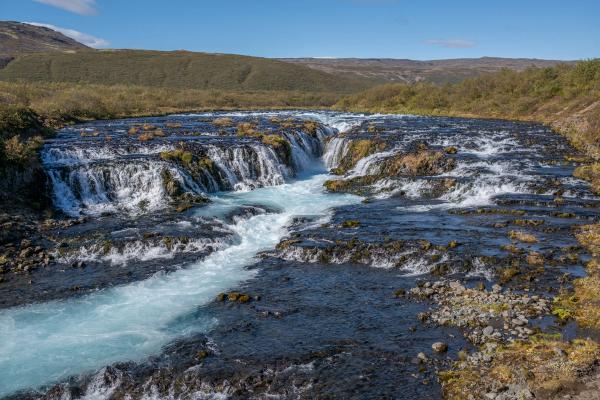
Gullfoss Waterfall
The last big stop on the Golden Circle is also one of the most dramatic. Gullfoss crashes in two tiers into a deep canyon, sending mist high into the air and rainbows across the valley on sunny days. On a clear afternoon, you might spot glaciers glinting on the horizon.
Its name means Golden Falls – and when the late-day sun hits the spray just right, you’ll see why.
Gullfoss is only a 10-minute drive from Geysir, so there aren’t any quick detours to make.

Finishing the Loop: Two Scenic Routes
Gullfoss marks the end of the main sights along the Golden Circle, but the drive south toward Route 1 is still full of worthwhile stops – whether you’re looping back to Reykjavik or continuing along the South Coast
You’ve got two main options:
Option 1: Via Road 30 (Flúðir and the Secret Lagoon)
Head south toward the village of Flúðir, but before you get there, make a quick stop at Brúarhlöð – a narrow canyon carved by the Hvítá River, with twisted basalt formations and milky-blue glacial water rushing through. It’s an easy pull-off with great views and very few crowds.
In Flúðir, you can unwind in the warm waters of the Secret Lagoon – Iceland’s oldest swimming pool, set among bubbling geothermal vents. A few minutes away is Hrunalaug, a more rustic hot spring tucked into the hills, with a stone shelter and a quiet, off-the-beaten-path vibe.
Option 2: Via Road 35 (Friðheimar & Kerið Crater)
This route takes you past Friðheimar, a tomato farm and greenhouse restaurant where the entire menu revolves around fresh, local produce. It’s a good lunch stop if you book ahead.
Before reaching Route 1, make one last detour to Kerið Crater – a vividly colored volcanic caldera with an aquamarine lake at the bottom. There’s a short walking path around the rim, and a small entrance fee to help with maintenance.
Map of the Golden Circle in Iceland
Where to Stay Around the Golden Circle
Most people driving the Golden Circle in a campervan will overnight at one of the area’s many campsites – but if you’re looking for something a bit more comfortable, you’ll find plenty of options along the route.
There are small guesthouses, farm stays, hostels, and a few boutique hotels in places like Laugarvatn, Flúðir, and near Geysir. These can be great if you're doing the route in winter or want a soft bed before or after your campervan adventure.
If you're mixing camping with other types of accommodation, we recommend booking in advance – especially during summer or holidays.
Final Thoughts
The Golden Circle might be Iceland’s most popular route, but it’s still full of magic – especially when you’re not on someone else’s schedule. With a campervan, you can chase the light, linger at waterfalls, and slip into a hot spring when the crowds are gone. Whether it’s your first day in Iceland or your last, it’s a route that always delivers.

